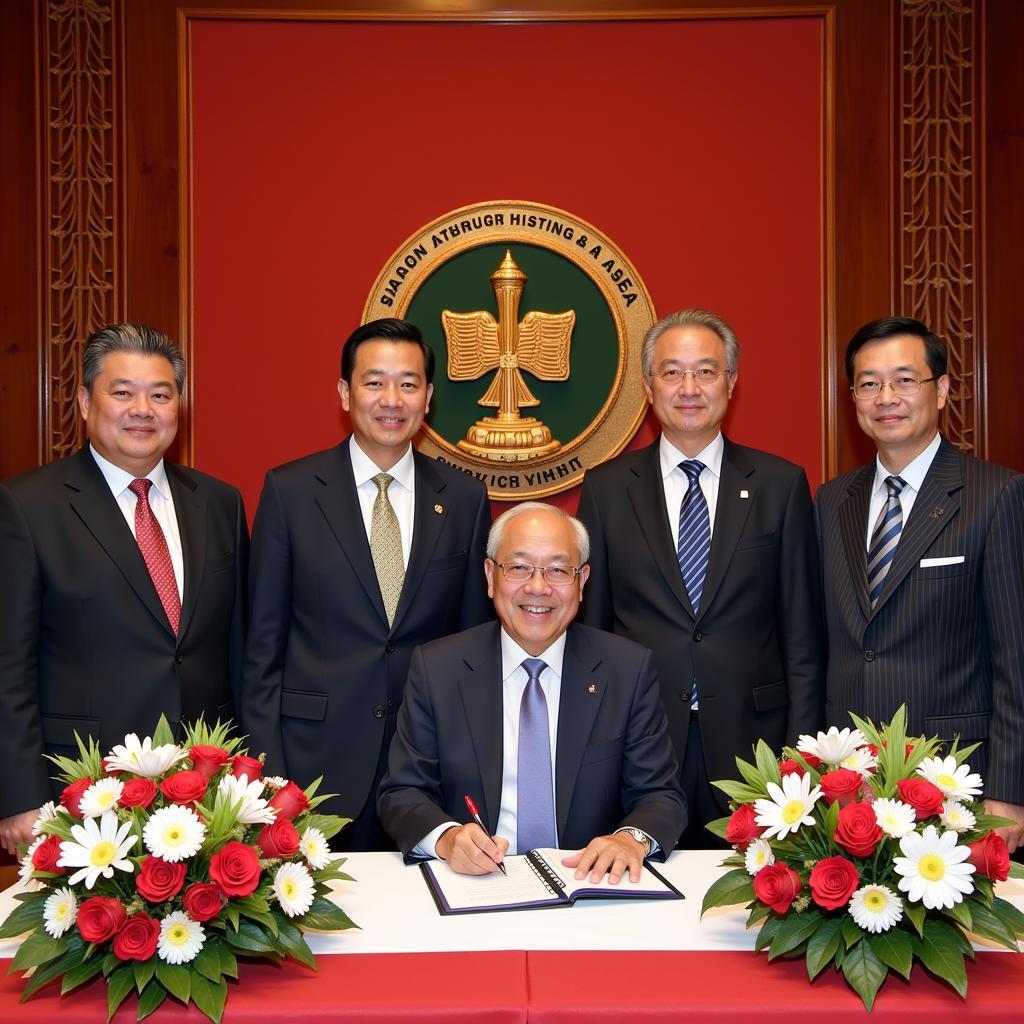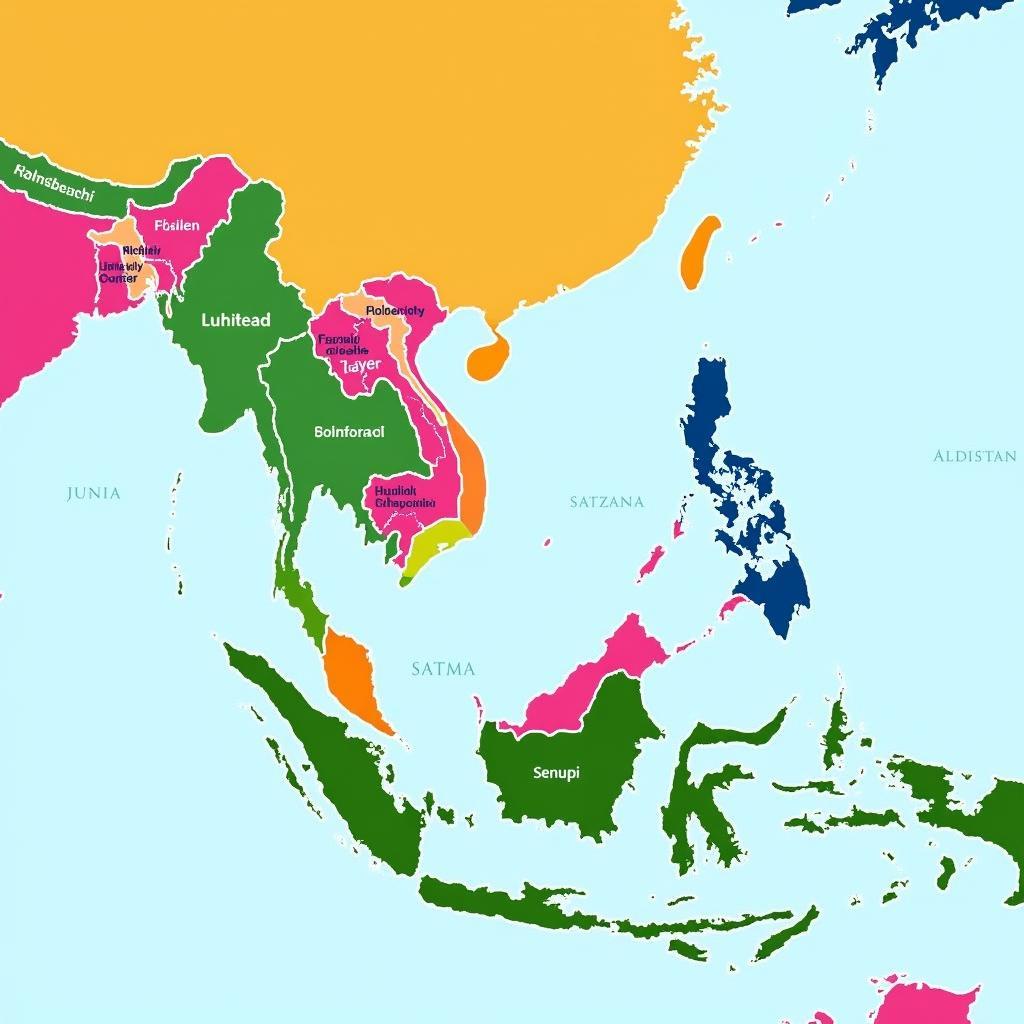The 1967 Asean Declaration, also known as the Bangkok Declaration, marked a pivotal moment in Southeast Asian history. Signed on August 8, 1967, by the five founding members – Indonesia, Malaysia, the Philippines, Singapore, and Thailand – this document laid the groundwork for the Association of Southeast Asian Nations (ASEAN) and its enduring pursuit of regional cooperation and integration. This declaration wasn’t just a formality; it was a promise, a shared vision for a peaceful and prosperous Southeast Asia.
 Signing of the 1967 ASEAN Declaration
Signing of the 1967 ASEAN Declaration
Understanding the Context of the 1967 ASEAN Declaration
The mid-20th century was a turbulent period for Southeast Asia. Newly independent nations grappled with internal conflicts, external pressures, and the lingering shadows of colonialism. The Cold War cast a long shadow, dividing the world and threatening to engulf the region in ideological struggles. In the midst of this uncertainty, the 1967 ASEAN Declaration emerged as a beacon of hope, a testament to the shared desire for peace, stability, and regional solidarity. The declaration recognized that by working together, these nations could overcome their challenges and build a brighter future. 4 reasons why asean was formed
Key Principles of the Bangkok Declaration
The 1967 ASEAN Declaration outlined several key principles that would guide the organization’s future development. These principles included:
- Mutual respect for the independence, sovereignty, equality, territorial integrity, and national identity of all nations. This principle emphasized the importance of treating each member state as an equal partner, regardless of size or political system.
- The right of every state to lead its national existence free from external interference, subversion or coercion. This reflected the strong desire for self-determination and non-interference in the domestic affairs of member states.
- Renunciation of the threat or use of force. This commitment to peaceful resolution of disputes laid the foundation for a region characterized by dialogue and diplomacy.
- Effective cooperation among themselves. This principle underscored the belief that collective action was essential to addressing common challenges and achieving shared goals.
What were the goals of the 1967 ASEAN Declaration?
The 1967 ASEAN Declaration set forth ambitious goals for regional development. These goals included:
- Accelerated economic growth, social progress and cultural development in the region. The declaration recognized that economic development, social progress, and cultural enrichment were interconnected and essential for improving the lives of the people of Southeast Asia. asean 8 august 1967
- Promotion of regional peace and stability. The declaration emphasized the importance of creating a stable and secure environment conducive to development and prosperity.
- Active collaboration and mutual assistance on matters of common interest. This principle recognized the value of sharing knowledge, resources, and expertise to address common challenges.
How did the 1967 ASEAN Declaration impact Southeast Asia?
Dr. Amelia Tan, a renowned Southeast Asian historian, notes, “The 1967 ASEAN Declaration was more than just words on paper; it was a catalyst for regional transformation. It provided a framework for cooperation that allowed Southeast Asian nations to navigate the complexities of the Cold War and emerge as a dynamic and influential region.”
The Lasting Legacy of the 1967 ASEAN Declaration
The 1967 ASEAN Declaration remains a cornerstone of ASEAN’s identity and purpose. It serves as a reminder of the shared values and aspirations that unite the diverse nations of Southeast Asia. ase what is 50th asean summit The declaration’s principles continue to guide ASEAN’s efforts to promote peace, stability, and prosperity in the region. anggota pertama asean
Professor Budiman Sujatmiko, a leading expert on ASEAN affairs, observes, “The 1967 ASEAN Declaration laid the foundation for a regional architecture that has proven remarkably resilient over the decades. It has enabled ASEAN to adapt to changing geopolitical landscapes and address a wide range of challenges, from economic crises to natural disasters.”
The 1967 ASEAN Declaration has helped to shape a more peaceful, prosperous, and interconnected Southeast Asia. Its legacy continues to inspire the pursuit of regional unity and cooperation.
Conclusion
The 1967 ASEAN Declaration, a landmark achievement in regional diplomacy, established the foundation for ASEAN and set the stage for decades of cooperation and progress in Southeast Asia. This pivotal document reflects the shared commitment of the founding members to peace, stability, and mutual prosperity. The 1967 ASEAN Declaration continues to serve as a guiding principle for the organization’s future.
FAQ
Need assistance? Contact us 24/7 at Phone: 0369020373, Email: aseanmediadirectory@gmail.com, or visit us at: Thôn Ngọc Liễn, Hiệp Hòa, Bắc Giang, Việt Nam.
